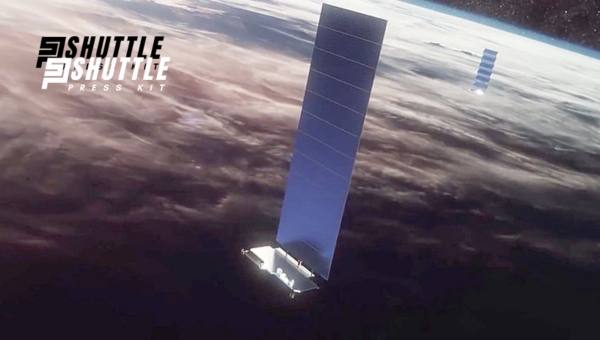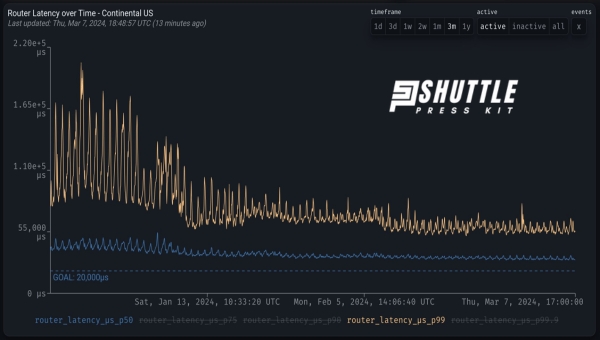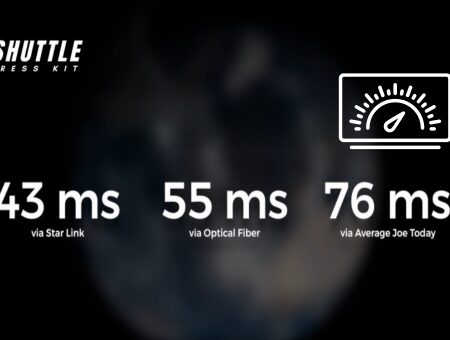The future of internet services is evolving at breakneck speed. In our interconnected world, a reliable and high-speed internet connection is the lifeblood of modern activities, from work to leisure. In this article, we’re going on a deep dive into one promising player in the game – Starlink’s satellite internet system.
By delving into Starlink Latency Explained, we’ll make sense of some technical jargon and help you understand how this ambitious project revolutionizes your browsing experience.
Starlink’s latency signifies the time it takes for data to travel between its source and destination. With thousands of satellites orbiting close to Earth, Starlink minimizes this time gap, resulting in faster Internet connectivity – generally much quicker than traditional broadband providers can offer in many areas.
The Significance of Low Latency in Starlink
In simple terms, latency can be understood as the total time taken by data to travel from one point to another over the internet. So when we’re referring to low latency, we mean shorter transit time – which is a good thing! Imagine playing your favorite online game or video calling a loved one; you don’t want significant delays (high latency) leading to buffering or choppy calls. A delay measured even just in milliseconds can ruin your experience.

That’s where low latency comes into play and gains its significance for any form of digital interaction requiring real-time responsiveness.
A service with a lower-latency connection will ensure that there’s minimal lag and delay during your interactions over the web – be it gaming or streaming movies! Therefore,Starlink‘s promise for lower latency could dramatically enhance your browsing experience, driving the home point that internet latency matters!
Also Read: Starlink vs HughesNet: Which Wins the Satellite Battle?
Components of Latency
Now that we understand what latency is – let’s dissect what contributes towards making this measure either high or low.
- Propagation delays: This factor is simply reliant on distance between two connection points – much like our email example earlier.
- Transmission delays: Herein lies the core distinction between conventional Internet Service Providers (ISPs) and satellite-based services like Starlink; ISPs send data along cables while satellites relay information wirelessly through space.
- Routing and processing delays: This is related to the amount of time network systems spending identifying where data should go next.
- Queueing delays: Typically, data must wait its turn before it can travel along a network path. Large amounts of queued data could result in noticeable latency.
Although all the aforementioned components contribute towards overall internet latency, Starlink’s satellite-based approach uniquely affects each element – a point we’ll delve into further into the Blog.
Also Read: How to Check Starlink Service Status? – Quick and Easy Guide
The Satellite Constellation & Its Impact on Latency
The deployment strategy employed by SpaceX significantly influences latency time—or in layman terms—the delay between when you click on something and when it happens. The fact of being located not too distantly above translates directly into reduced latency times—a significant win for real-time gaming or video conferencing where any lag can be annoying.

Moreover, the large number and global distribution of these LEO satellites only further bolster this performance benefit even more—since no matter where users are located—they’re likely under one if not many of these satellites at a time. This redundancy means — in case of a mechanical failure or atmospheric disturbance — the system will still work seamlessly as the next satellite takes over, ensuring continued service delivery with negligible interference to latency.
Real-World Performance Metrics for Starlink
When evaluating any internet service provider (ISP), performance metrics are key. They not only tell us about potential download speeds but also reflect upon latency rates—the very aspect which determines how long it’ll take for data to go from source to destination. So, let’s discuss Starlink’s stats right now.

According to reports from beta users and testing agencies, Starlink’s latency currently averages around 20-40 milliseconds (ms). This is extremely competitive when compared with other ISPs and indeed comparable to traditional fiber or DSL services. In terms of download speed, most users report getting around 100 Mbps or over, which while not earth-shattering, is more than sufficient for most online tasks like streaming in high resolution or gaming.
This consistent latency advantage over other ISPs symbolizes the efficiency of their high-tech Low Earth Orbit satellite system. It’s a testament that technology can push boundaries and enable us all to enter an era where geographical location isn’t a limiting factor in accessing quality internet.
Comparisons To Traditional ISPs
To fully grasp what ‘Starlink Latency brings to the table, let’s compare it with traditional satellite ISPs:
- Latency: Traditional satellite services generally have much higher latencies — often in the range of 600ms or more. This is due to comparative inefficiency in data transfer as these satellites sit at far higher orbits than Starlink satellites.
- Download Speeds: While exact numbers will vary based on various factors including plan tier and network congestion amongst others; traditionally satellite services can struggle to sustain the 100 Mbps speeds reported by many Starlink users.
- Accessibility: Many traditional ISPs are unable to provide service in remote areas or those with challenging terrain. In contrast, Starlink aims to offer its services worldwide, courtesy of its extensive satellite constellation.
The comparison essentially reaffirms that while Starlink is relatively new in the ISP arena, it has already demonstrated capabilities to overcome common limitations that other service providers struggle with. Constant technological enhancements imply we might see even better performance metrics in the near future.
Also Read: How to Contact Starlink Customer Support? – Quick Guide
FAQs
How does a lower “Starlink Latency” influence user experience?
A lower Starlink Latency significantly enhances user experience by enabling smooth real-time applications such as video calls and online gaming.
What makes “StarLink Latency” different from other satellite ISPs?
Unlike traditional satellite ISPs that have high latency due to their geostationary orbits, Starlink’s Earth-low orbit positioning drastically reduces latency, providing faster internet connectivity.
How does the location of Starlink satellites impact latency?
The low-Earth-orbit of Starlink satellites reduces the distance data needs to travel, subsequently reducing the time taken for data transmission, thus decreasing latency.
How might future updates improve “StarLink Latency”?
Future updates aim to deploy more satellites closer to Earth and improvements in ground station connectivity; this will , in turn, decrease latency further improving internet speed and user experience.
Is StarLink’s low-latency Internet suitable for rural areas?
Yes, due to its expansive global coverage and high-speed capability regardless of location, StarLink’s low-latency internet is particularly beneficial for users in rural and remote areas where traditional broadband services are unavailable or unreliable.
Also Read: Flat High-Performance Dish Unveils Powerful Starlink
Conclusion
In the quest for global connectivity, Starlink is proving to be a game-changer. Its low latency capabilities are reshaping the Internet landscape, birthing an era of high-speed and reliable internet access, even in previously unreachable areas.
The effectiveness of Starlink’s satellite constellation in reducing latency is remarkable compared to traditional ISPs, with ongoing enhancements promising even better performance.
Indeed, understanding ‘Starlink Latency Explained’ goes beyond mere technical jargon, providing insights into how our digital world continues to evolve swiftly.
